Goblin Market Toronto
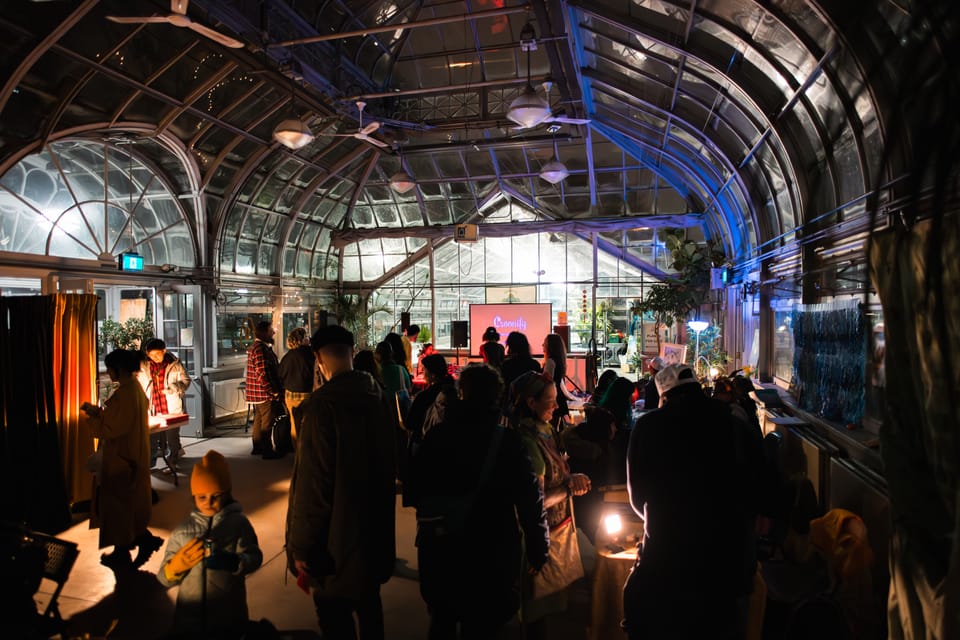

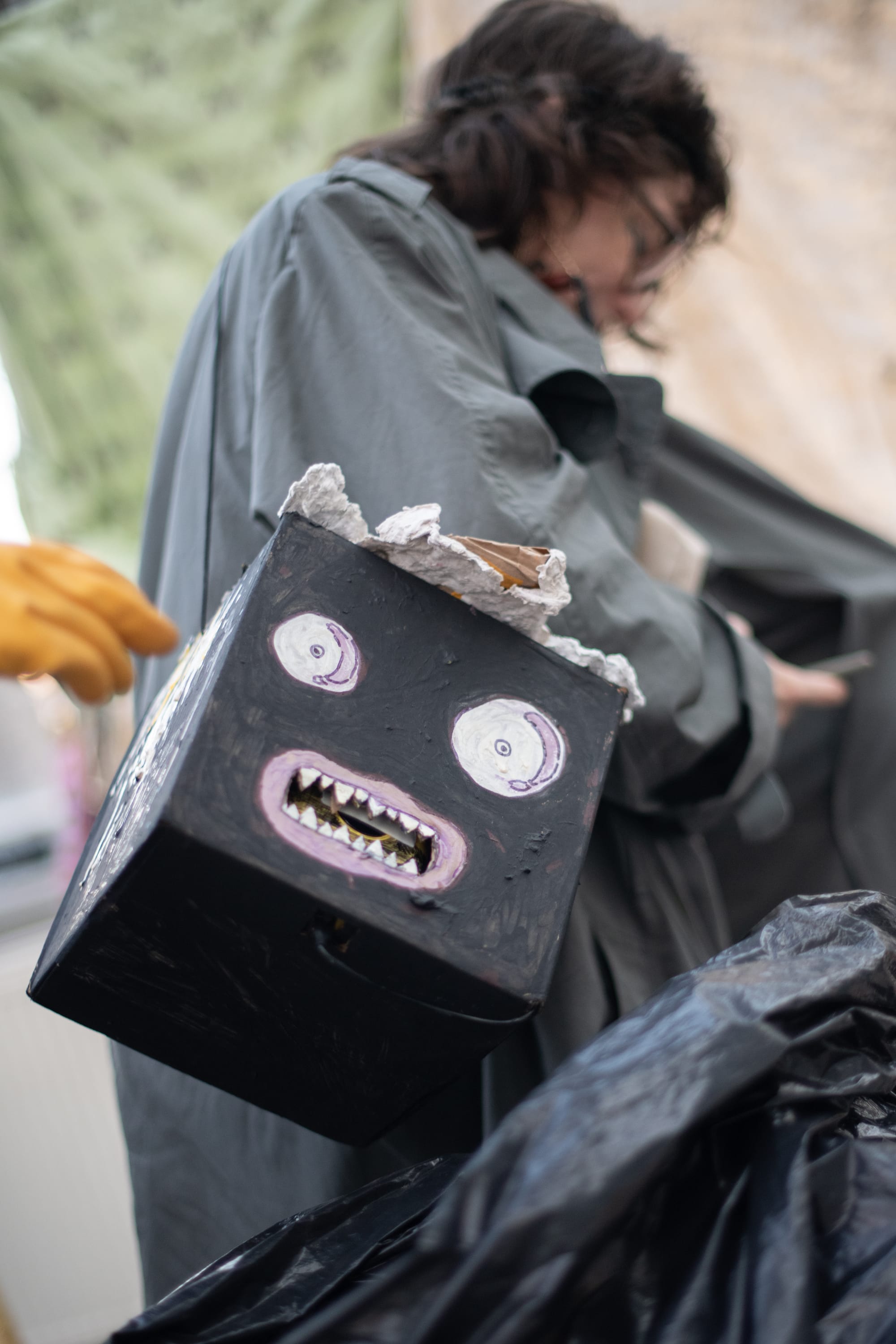

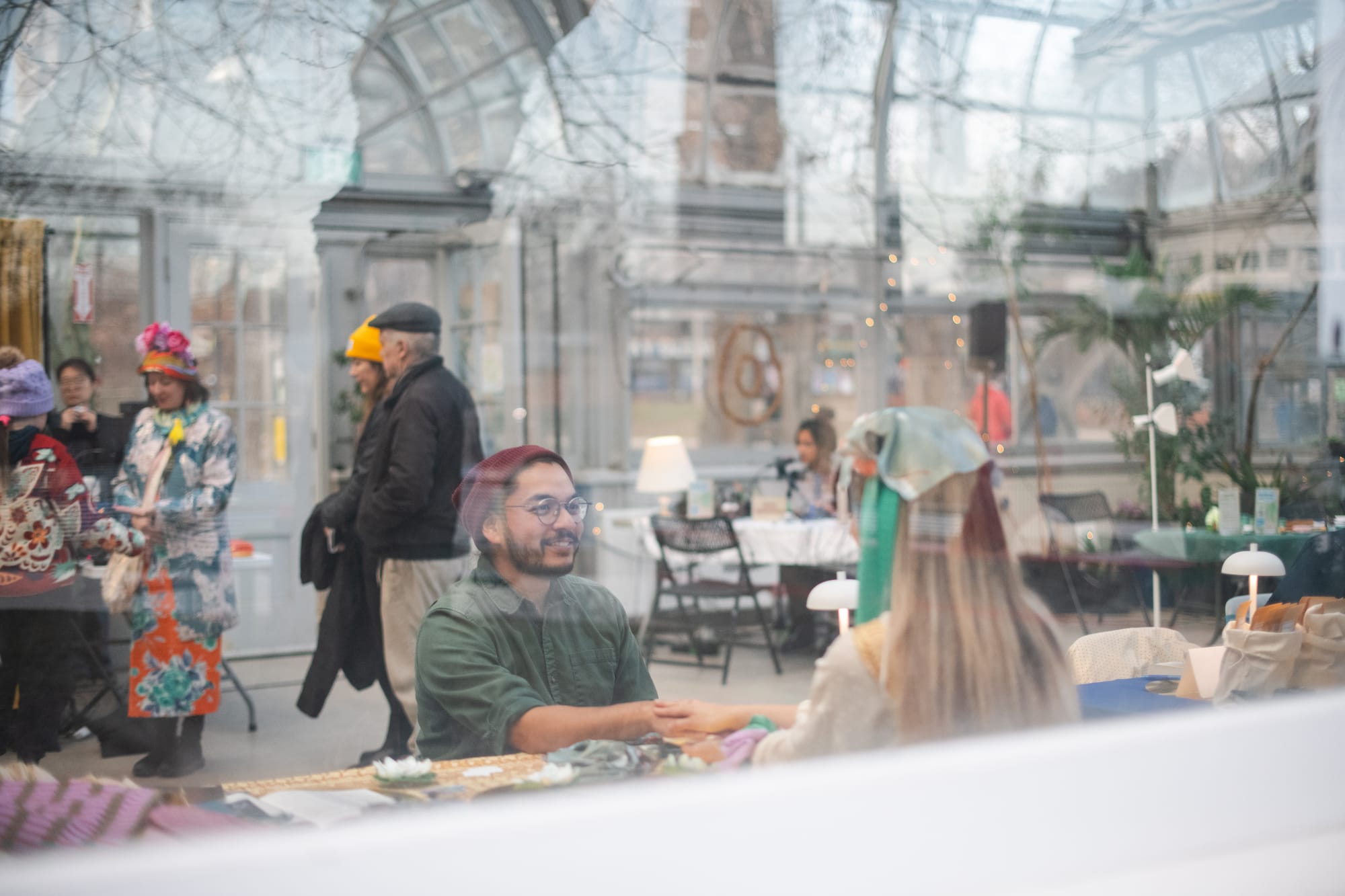
Goblin Market Allan Gardens, Toronto | Photography: Nick Gallarza
Thank you for stumbling upon the Goblin Market and generously sharing your time (and jokes) with us. Over the two nights of Goblin Market in Toronto at Allan Gardens Children's conservatory, 300+ audiences joined the action. Many visitors walked past the park and decided to wander in, and some deliberately dressed up for the occasion. The Market explored concepts of generosity, exchange, and joy, and more importantly, a vast and unexpected set of "merchants" with their artistic practices not as mere objects and artefacts but as lived-in worlds.
Let's call these lived-in worlds "prototypes." The artists engaged in the research process communicated the core of their reimagining of how people encounter and participate in the arts through the mediums and stories most suited for them.
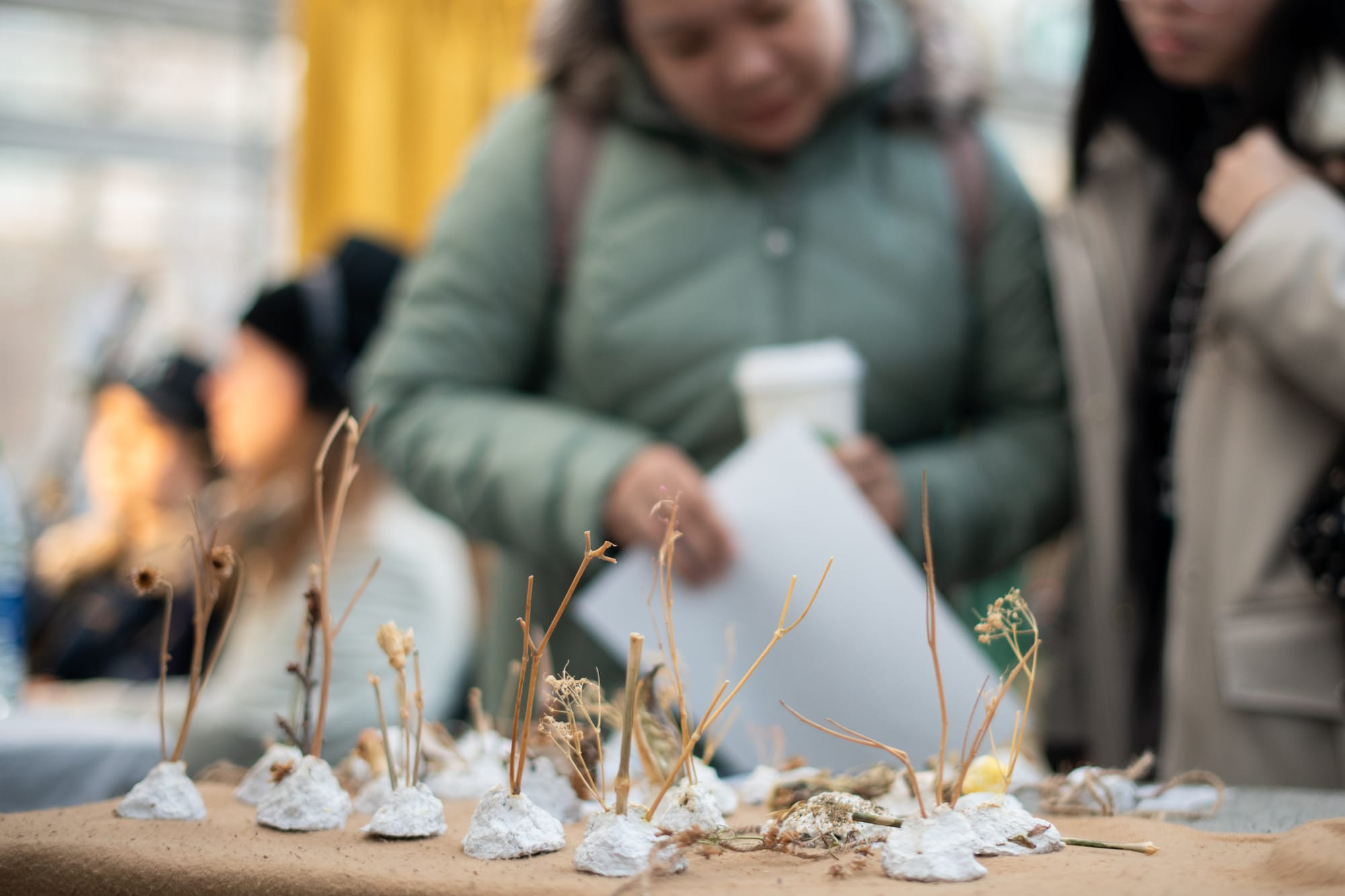
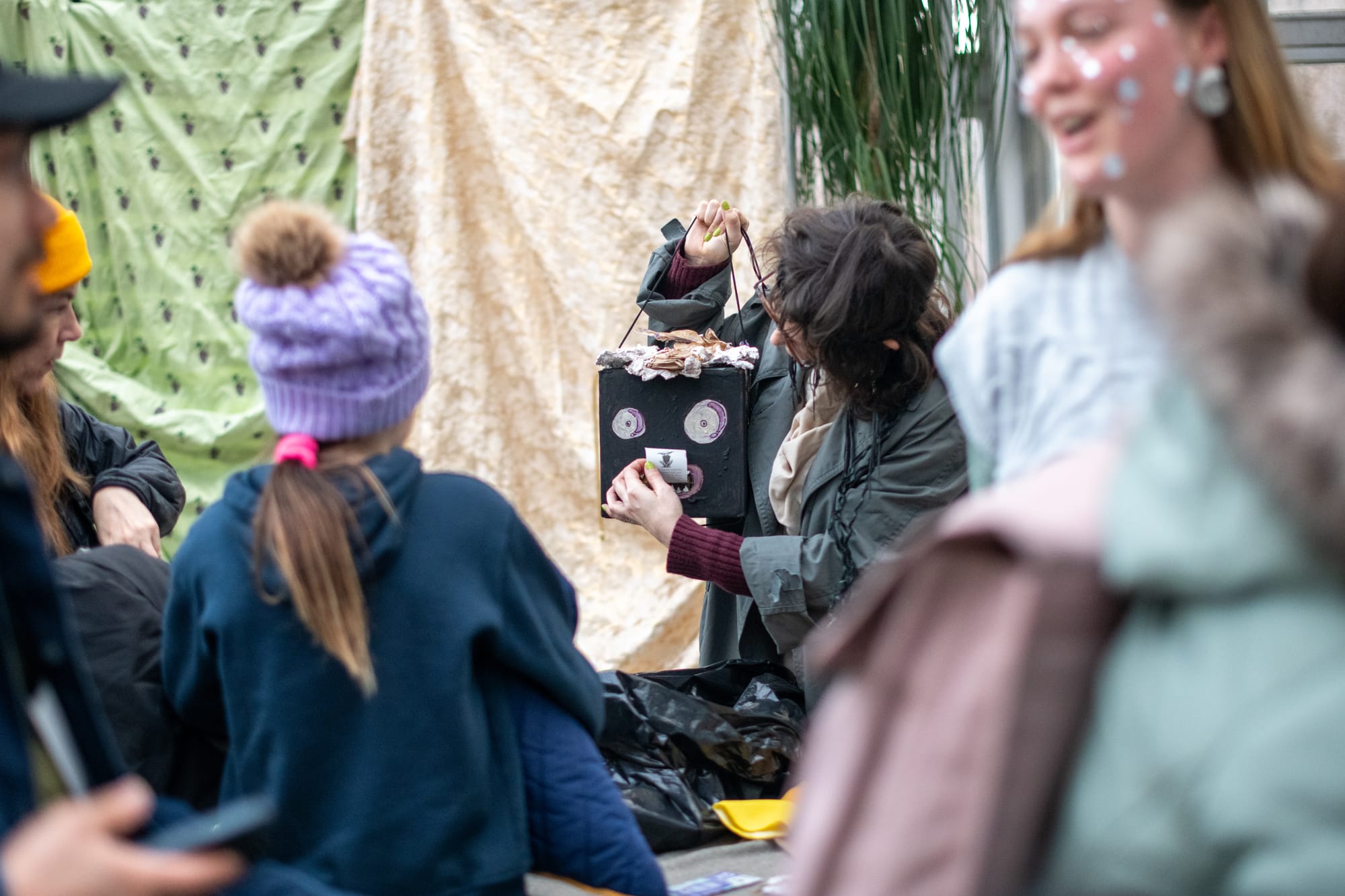
Tricia Enns turned their concerns over waste, consumption, and the habitual offloading of misery to other people through transactions into lore and poetry, while offering a service to relieve misery at a cost. Contrary to the often didactic approaches, this all-ages experience provided visitors with views into environmental concerns and offered insights into our culture of consumption, disposability, and materialism through the wonders of Gremlore, Tricia's close collaborator in trash.

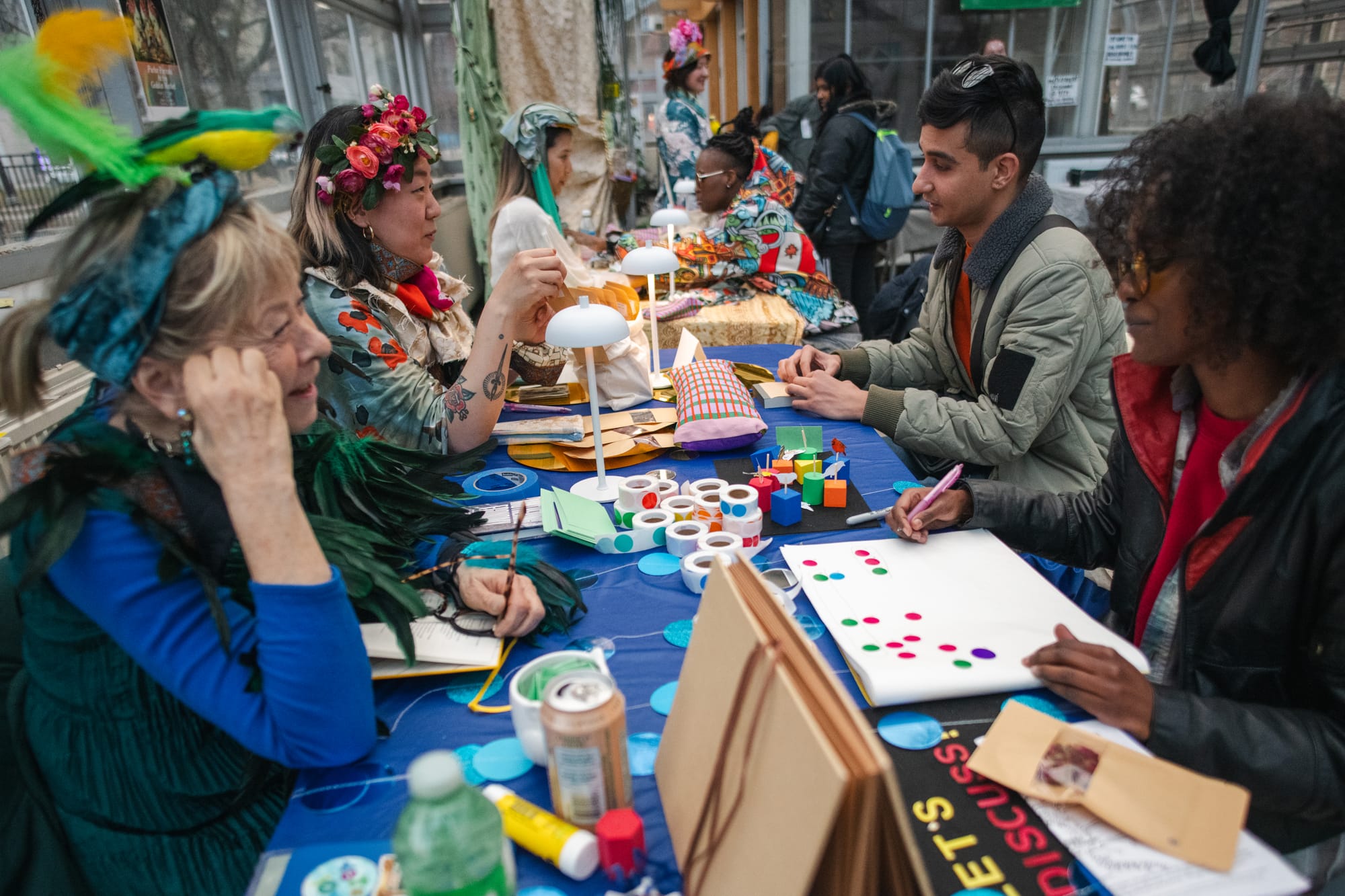
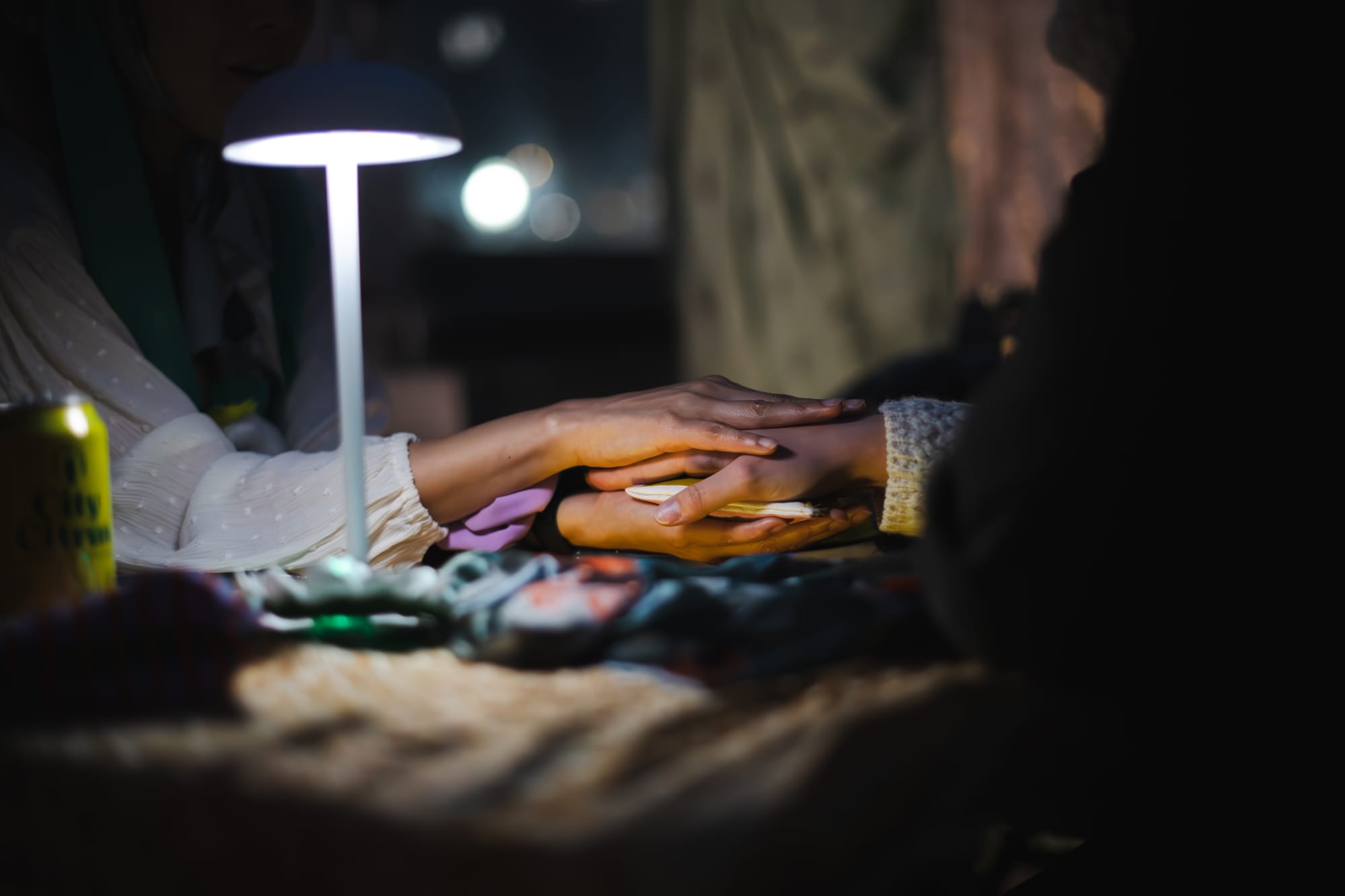
The Parlor Parrots Wanda Moon (Wendy Woon), Celeste Midnight (Maria Fang), Mz.T (Jessica Moon), and Auntie Dad (Amelia Winger-Bearskin) explore relational exchanges and how to be a friend to people you care for and how to work through your feelings when a friendship has expired. They'd ask you to share a secret for tea, make a friendship map, and get a cute photo at the photo booth. The Parrots had wares they sold to fund their travels, though most have been exchanged for precious items of similar emotional values.
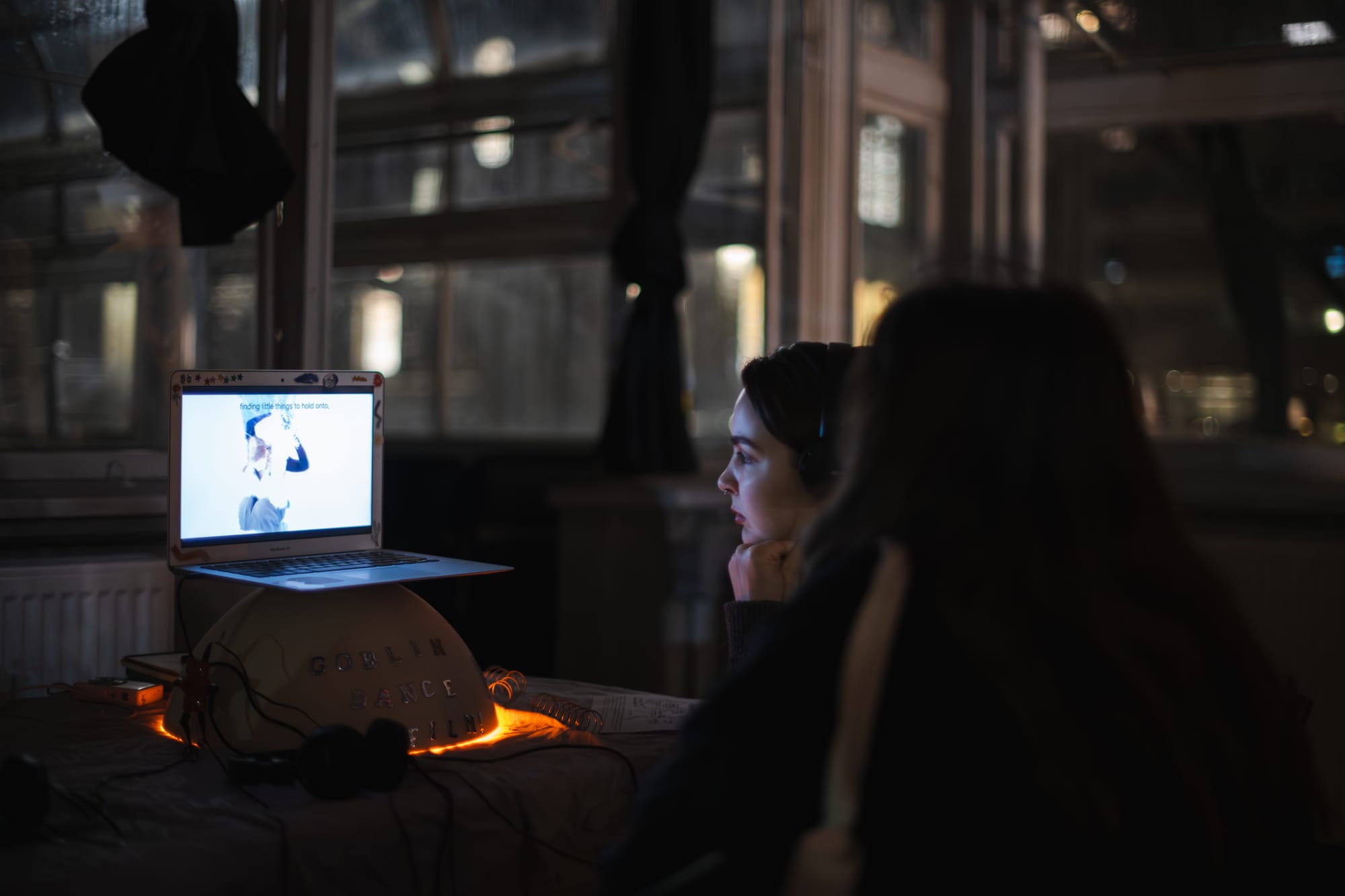
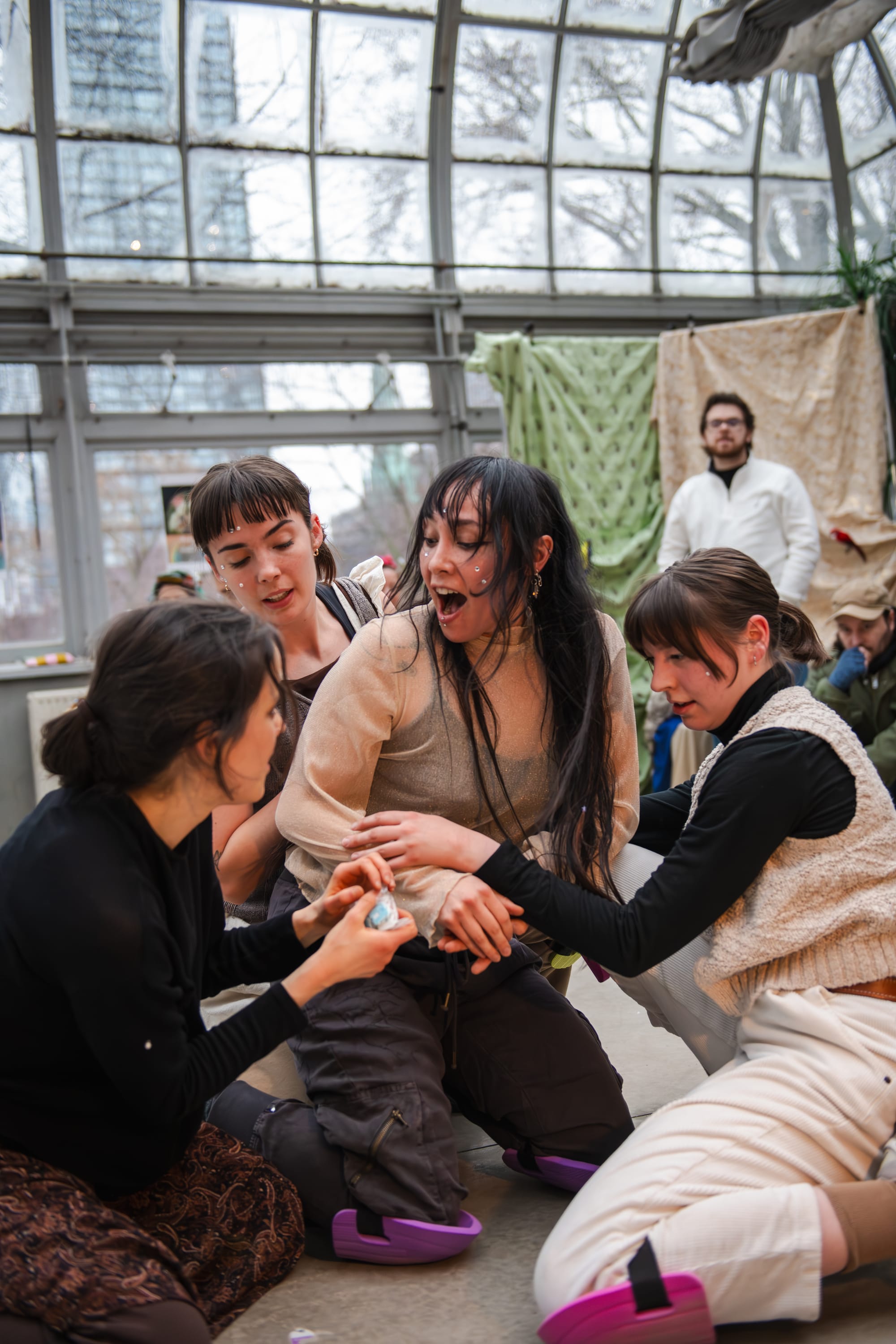
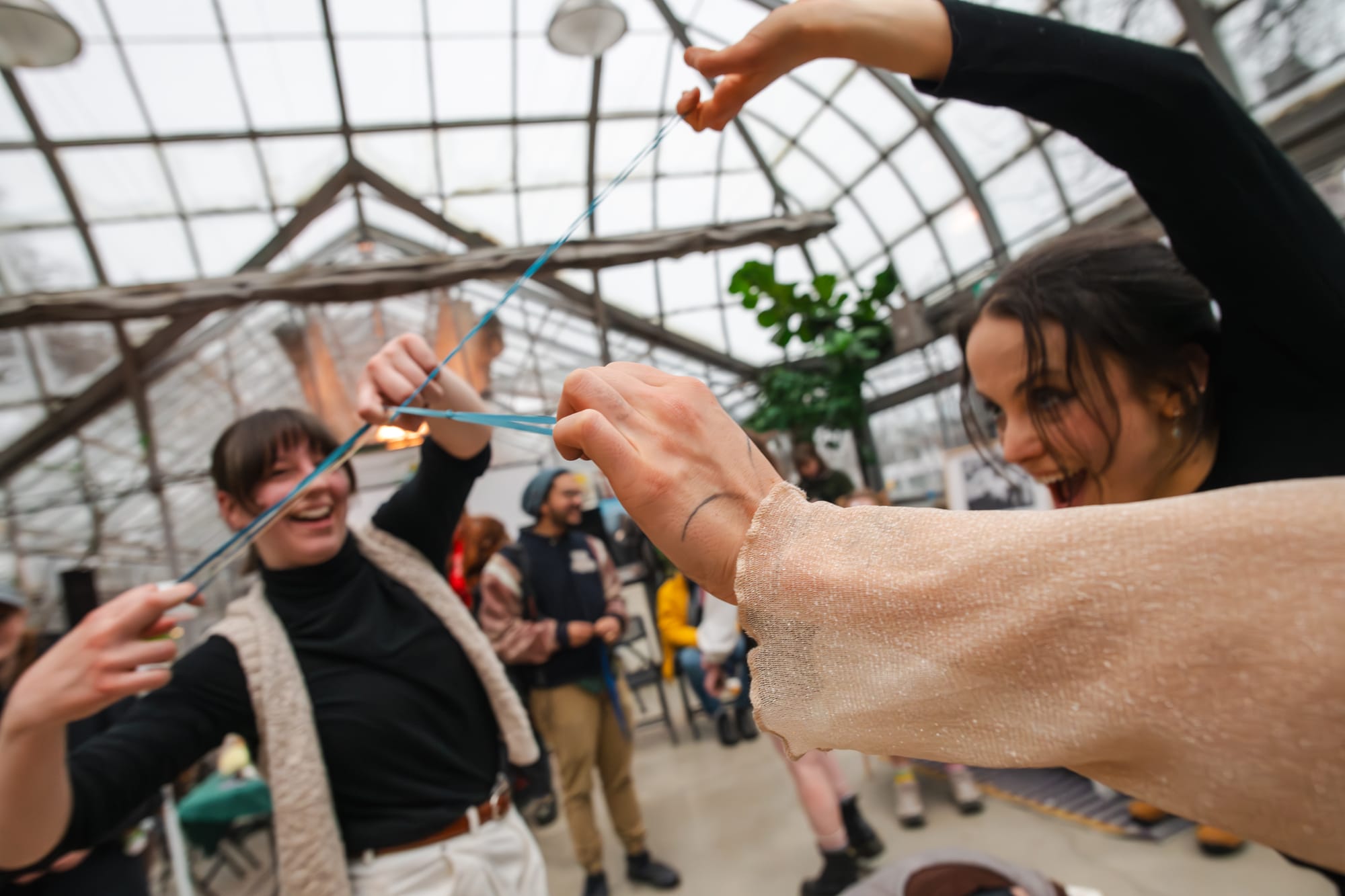
Abbey Richens hosted a small and intimate film screening for three audiences at a time. Melina Patry, Miah Lewis, Skye Rogers, Lux Gow-Habrich, and Carmen Leardi of The Meaningful Movement invited the audience into a dance frenzy about money that went from deception and jealousy to cooperation and the utmost joy at the end. Audiences responded with generosity, showering the dancers with gifts and trinkets. There's probably cash among the trinkets, too.
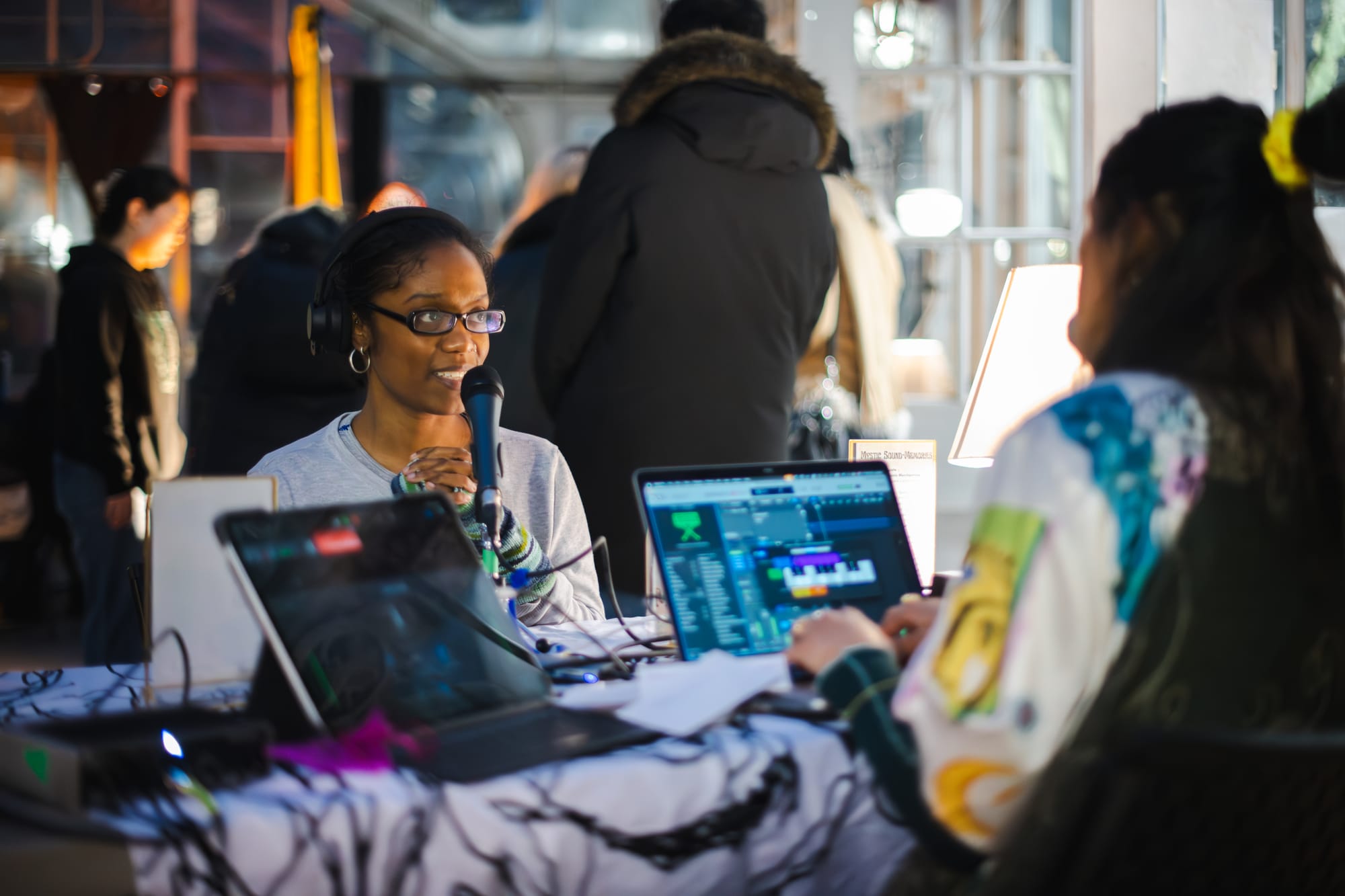


annais linares turned heartfelt messages into soundscapes that linger around the space and blend into the backdrop of the dance numbers. Later at night, the soundscapes are overtaken by goblin karaoke. Payments are in trinket exchange.
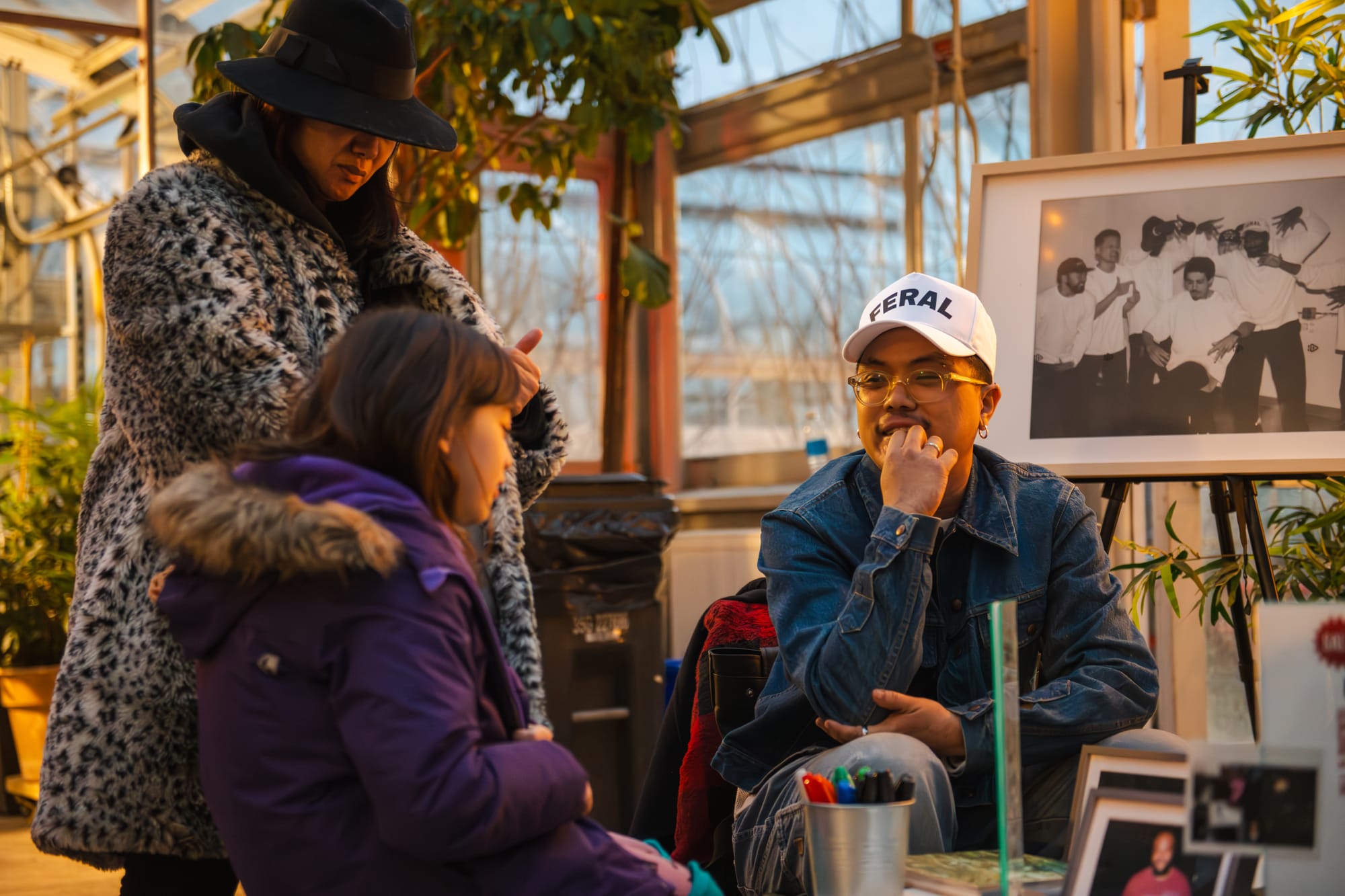
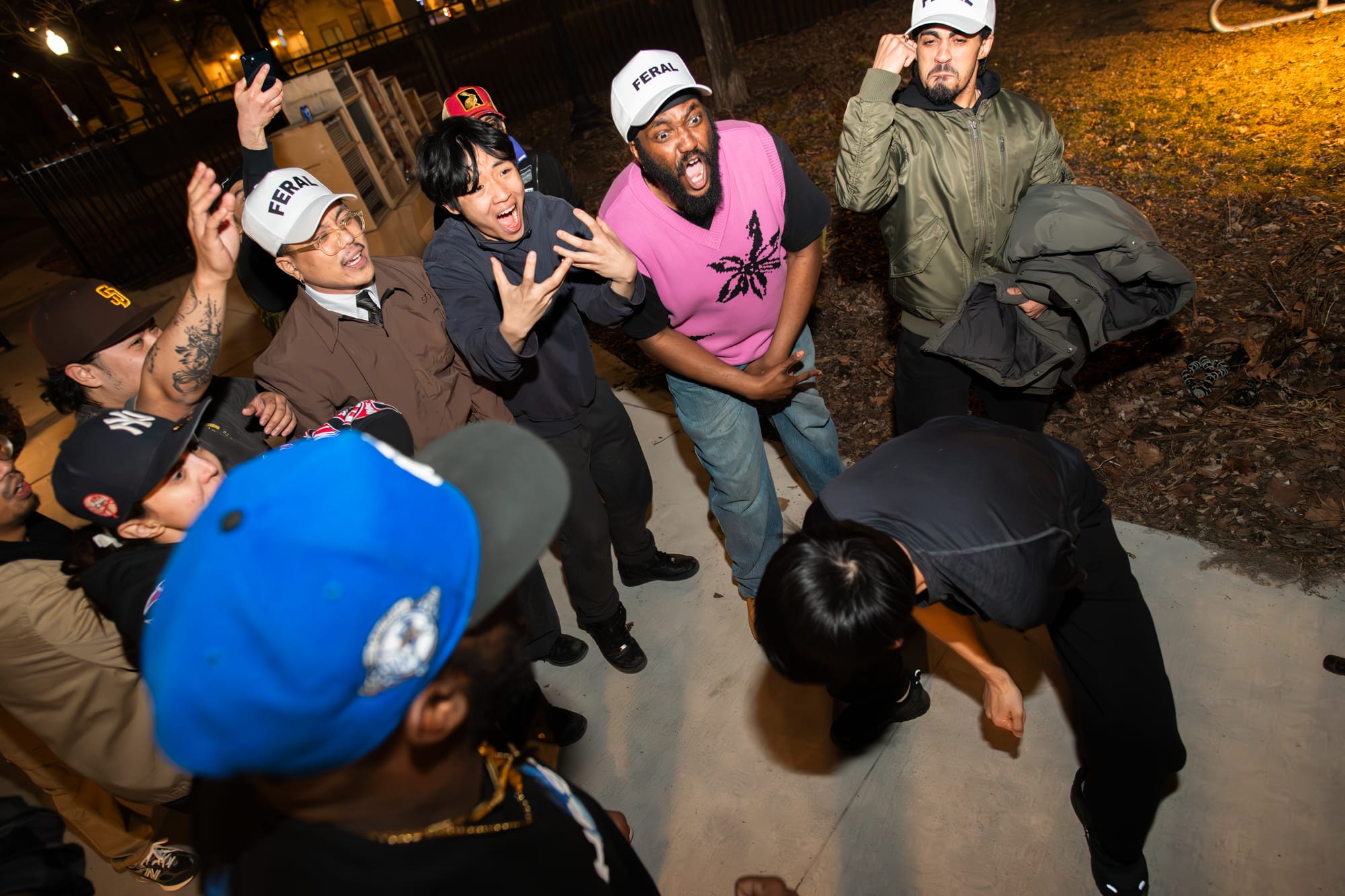


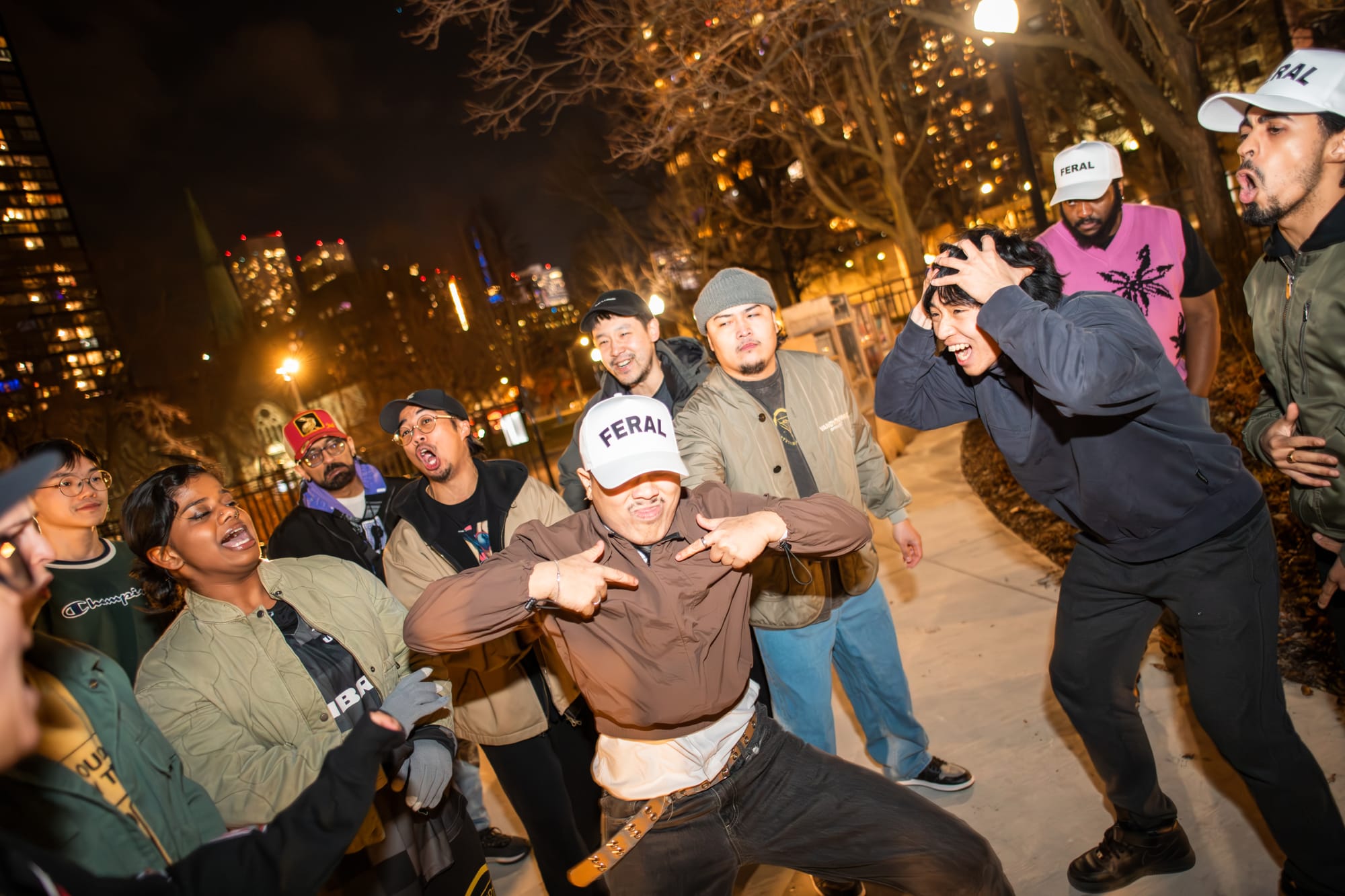
Adrian Layner brought WE LIKE KRUMP's family room and all the artefacts representing the values they hold and what shaped their journey along the way: books, ideas, photos, objects from the living room where WE LIKE KRUMP began. Screwface took the crowd outdoors: it was a full-fledged release of rage and beauty.
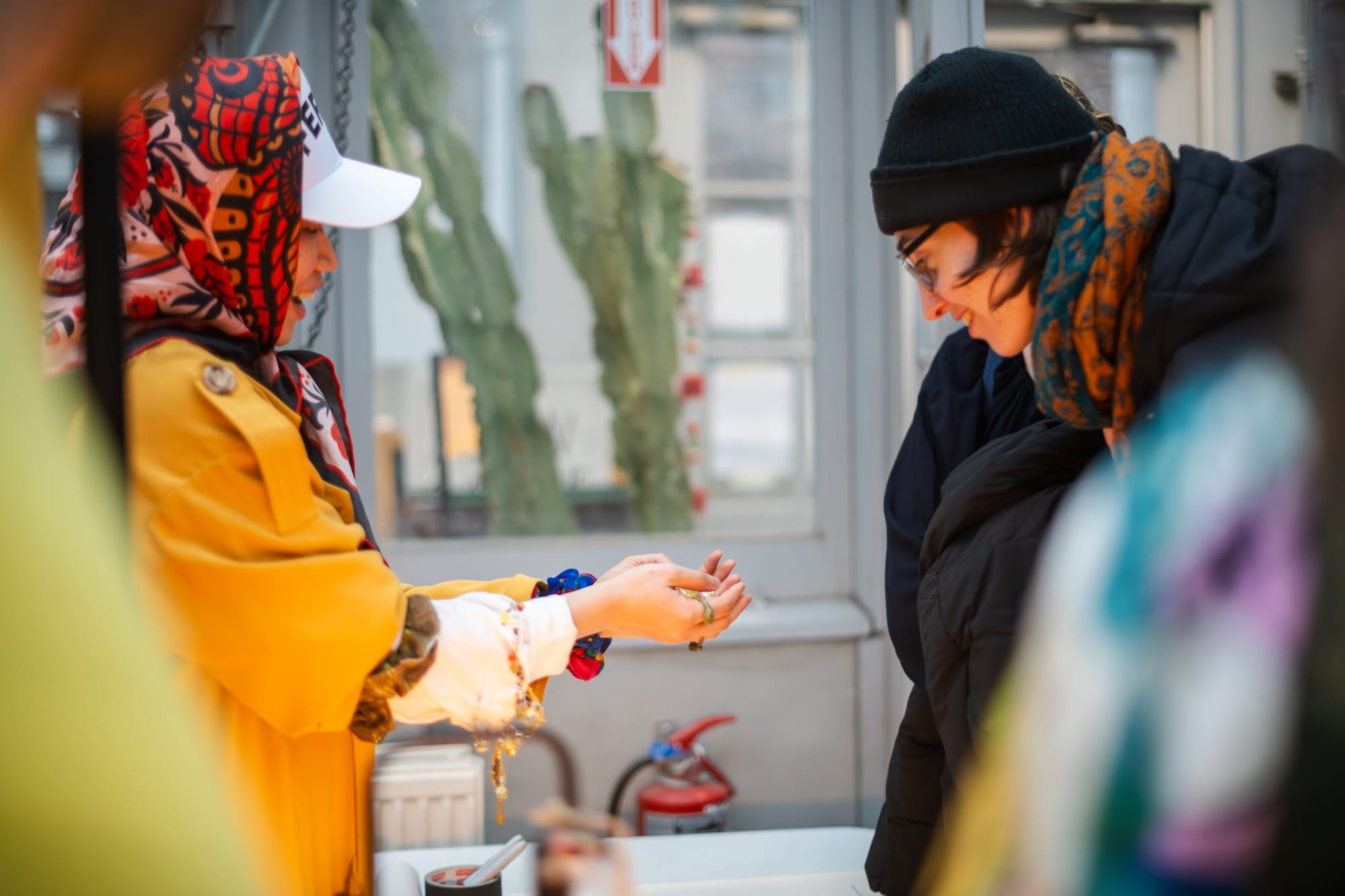
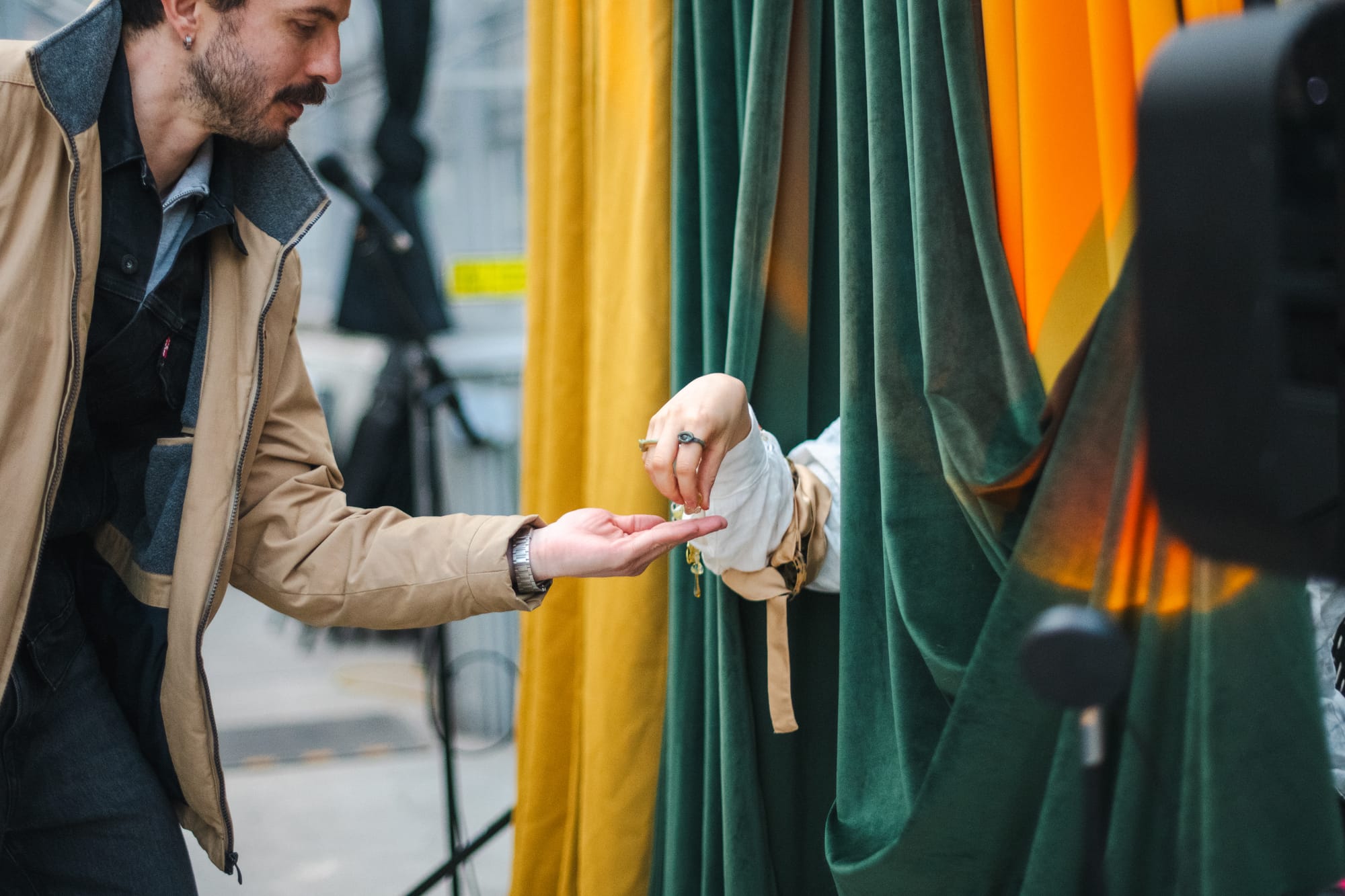
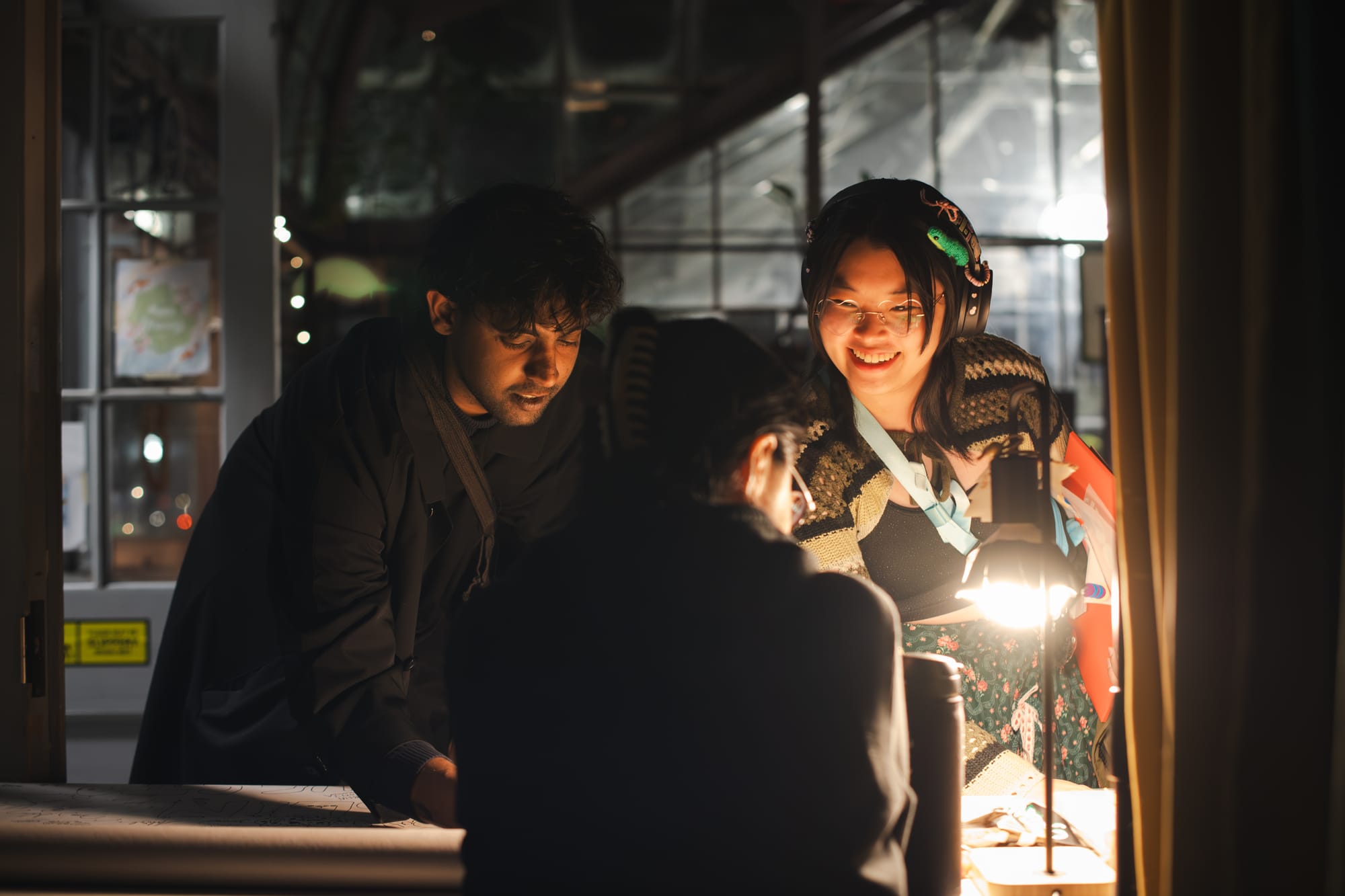

Luisa Ji created a story about a mysterious creature that tears up nodules in a "light-feeding" episode from the overwhelming clutter of lower-orbit satellites (like Starlink constellations). Audiences acquire this "nodule" artefact from the travelling coin dealer and the coin dealer's equally weird friends at the door, along with other artefacts gathered from journeys across the "art world": trinkets, snacks, sweets, art books, a strange lady telling fairy tales about the deep dark woods...

Emil Woudenburg is an online advertisement generator, a bot, a webpage, and a transient being that gives you the tools to mess with the digital ads space, similar to wheat pasting the streets or drawing googly eyes on a corporate ad. The bot couldn't reach Goblin Market due to technical issues (I KNOW RIGHT???). However, they will tap into the network during our next Goblin Market in Montreal.
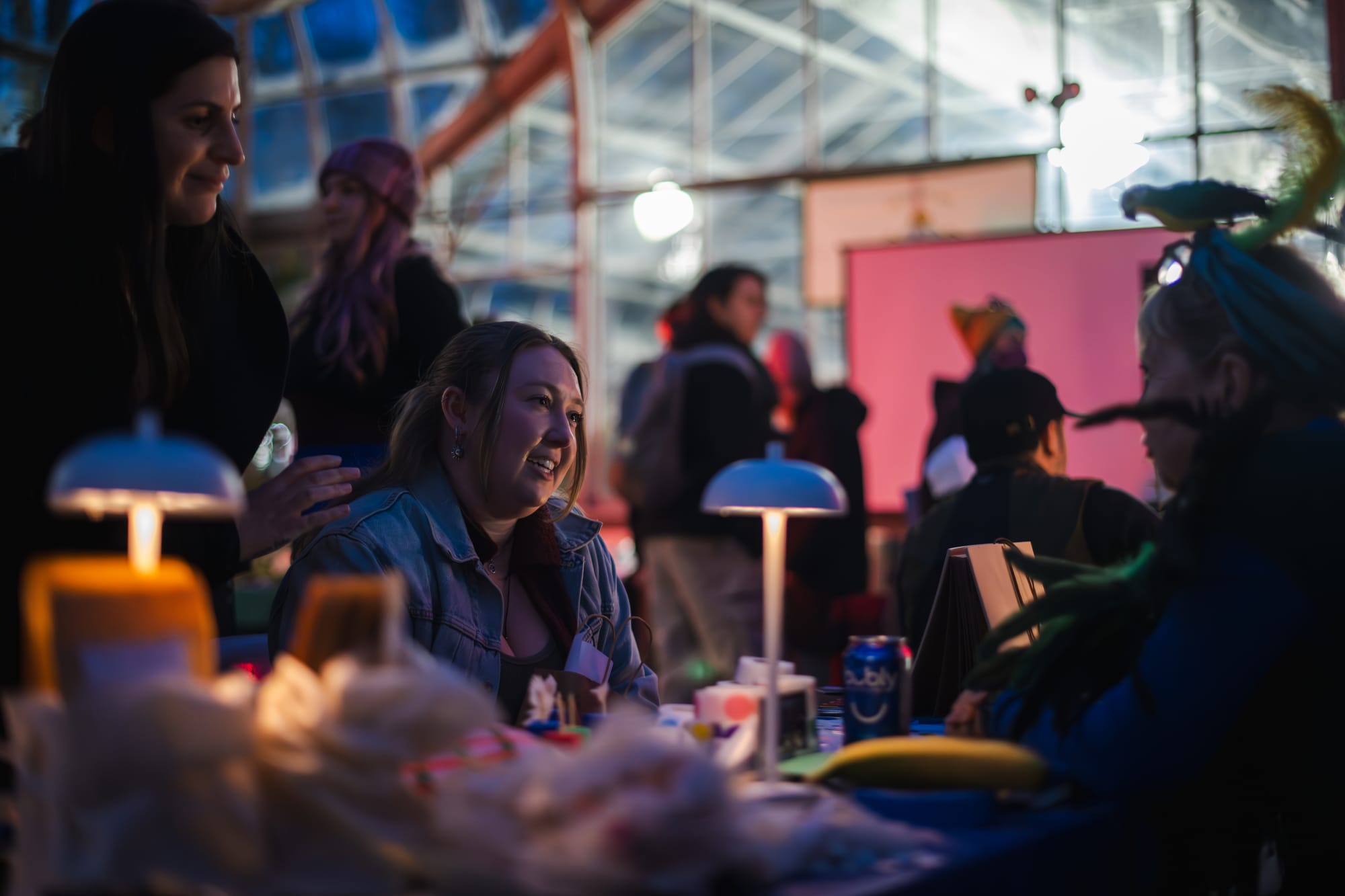
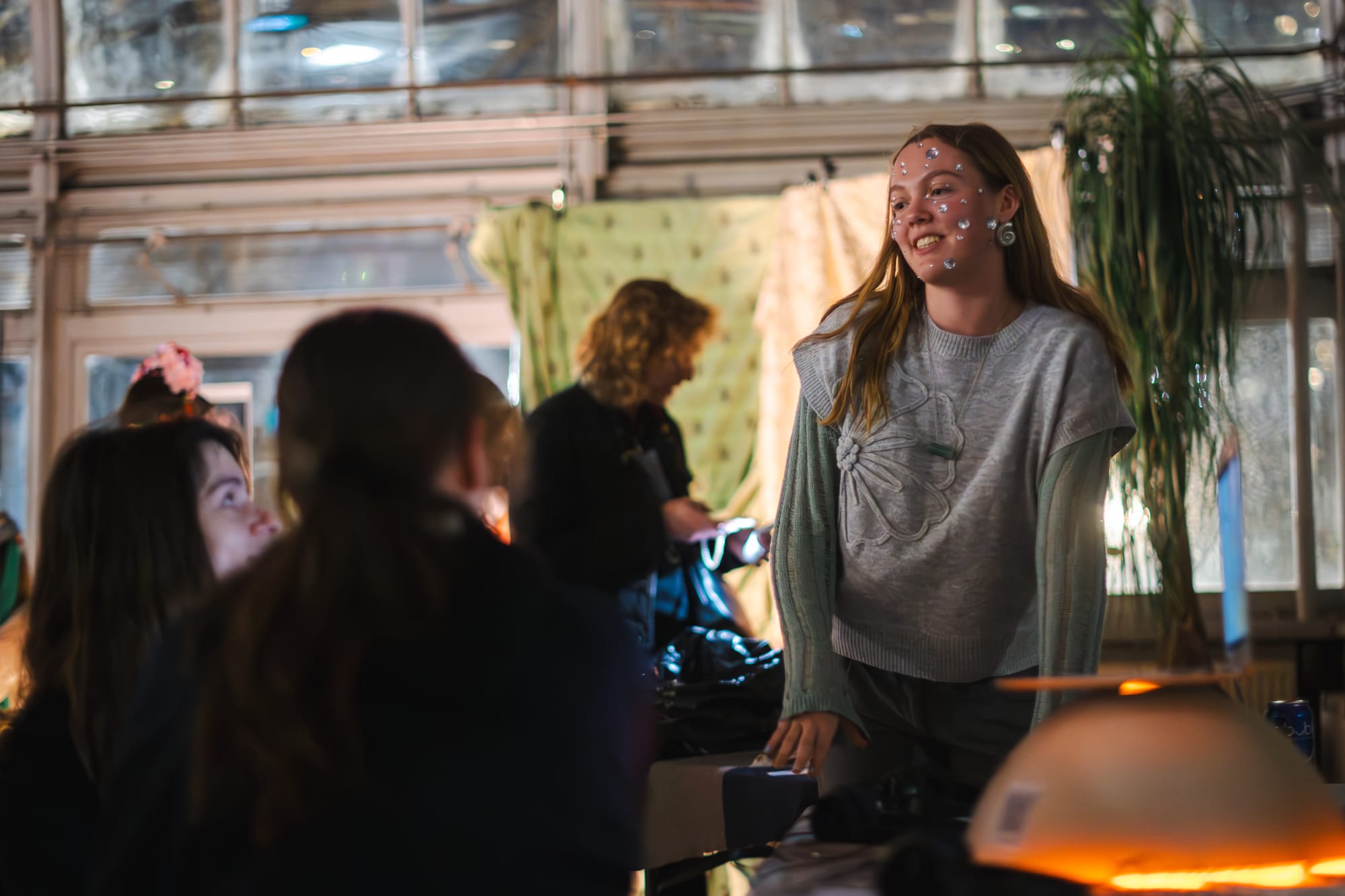
Some of these experiences cost real human money (later went to snacks for fellow goblins), some require the audience to tell a joke, and others can be obtained by simply signing the guest scroll or leaving a trinket behind. Nothing is free, even those that don't cost you a dime—"Was that joke a good or bad joke?" The thought lingers in your mind and might even come back to haunt you in the shower. When everything in life is pressing, the most valuable thing in our possession is time. Seeing some of you spending hours at Goblin Market with friends was heartwarming, as time is probably the most valuable thing one can trade. The game-like and, honestly, quite silly experiences came from serious questions that required us to reconsider our actions and how we want to live in an increasingly uncertain future.
"There's nothing as depressing as good advice. "
—The Growlers, Good Advice
"The games we play as children shape our behaviours as adults," offered Jerrold McGrath, one of the researchers for this project. Games that children play differ from culture to culture and place to place, and in the West, they are overwhelmingly about competition and perseverance. The game of musical chairs is an example. Such games resemble the stories we tell ourselves about success and often disregard the role of luck, cooperation, and negotiation in resolving the game. Earlier on in the prototyping process, Amelia Winger-Bearskin offered a different story. Child's Play is a story about a grand anomaly that puzzled everyone. As it unfolded, the seemingly unlikely (yet makes total sense) alliance between children and seniors was behind a remarkable event of wealth redistribution. We need "play" not just to feel good, but as small acts of mischief against arbitrary rules that don't serve anyone but the power-hungry hoarders of wealth, especially in a profoundly changed world where the illusion of a stable ground dissolves. Goblin Market appears silly because it is made illegible to those who take the world's rules for granted and never question them. Rather than good advice from the past and for a future that no longer exists, artists speak in magic, in layers of experiences that must be peeled back to reveal what hides behind all the fun and games.
We played into the goblins in Christina Rosetti's poem, this project was named after, that lured and enticed people with fruits and desires, but never imposed. We also saw ourselves in Lizzie, who got what she wanted, nicked a silver penny back from the goblins, and left the woods with a great story. Goblin Market as a process navigates the purity tests of the art world in its foolish way. We can't wait to see its next iteration as well as all the possible future ones unfold as we continue exploring what artistic survival looks like.
The gap between the unbearable present and the future we need to make for ourselves is the fear of looking like a fool. This fear is all-consuming, like Laura falling ill for ruminating on the goblin's fruits yet lacking the agency and action to pursue what she desires.
Commit fully to the joke you set out to tell. Make the joke as elaborate as possible. Make people laugh when we are advised to start worrying. A fool speaks the truth and gets away with it.
What's next?
Montréal, we are coming to the city April 24–26, thanks to a partnership with GU and Editions in Space. Both initiatives are centred on building better artistic and creative networks situated in place and relationships. In the coming weeks, new local and travelling merchants will also be announced to highlight relationships within the "Goblin" network that grew because of generosity and willingness to be in each other's business.
We now have a dedicated Instagram account https://www.instagram.com/goblins_everywhere/
At sunset, trade with the merchants, something you hold dear.


Member discussion